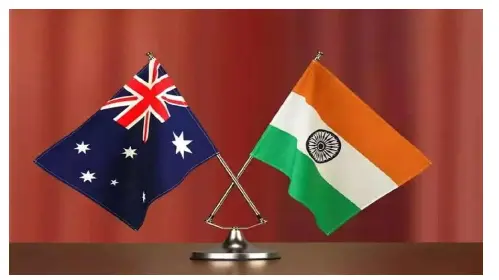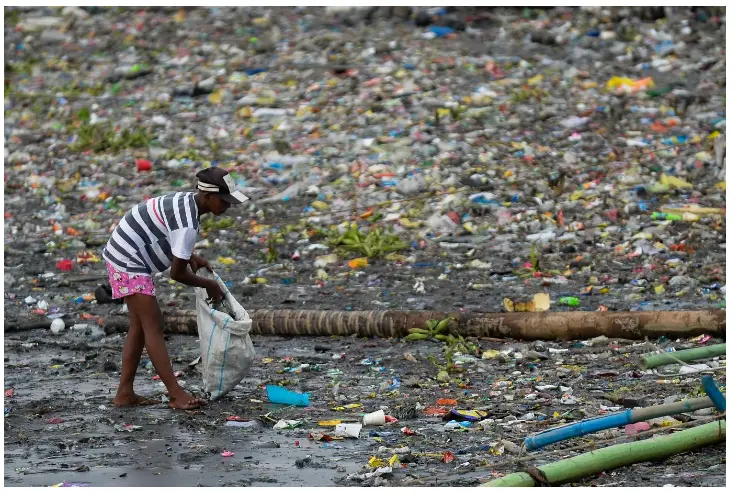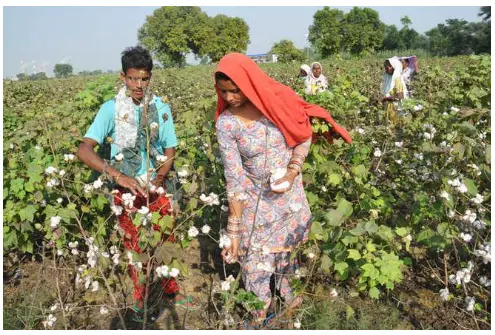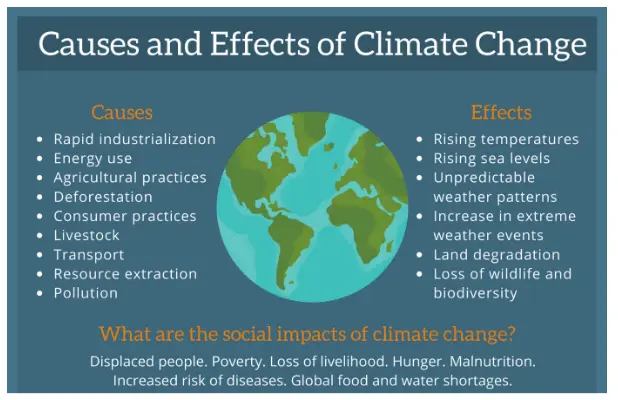Wednesday, 24th April 2024
Provisions for Star Campaigners
In News: Sunita Kejriwal, the wife of Delhi Chief Minister Arvind Kejriwal, has been designated as a 'star campaigner' by the Aam Aadmi Party (AAP) for its campaign in Gujarat.

Legal Provisions for Star Campaigners
- Section 77 of the Representation of the People Act 1951 (RP Act) outlines the regulations concerning the expenditure incurred by 'leaders of a political party', commonly referred to as 'star campaigners'.
- These campaigners typically include top leaders of political parties along with other celebrities, provided they are members of the appointing political party.
Appointment and Limits:
- The RP Act allows recognised political parties (national or State) to appoint a maximum of 40 Star campaigners, while registered unrecognised political parties can appoint up to 20.
- These appointments must be communicated to the Election Commission (EC) and Chief Electoral Officer (CEO) within seven days of the election notification.
- For multi-phase elections, parties can submit separate lists of star campaigners for different phases.
Benefits for Star Campaigners:
- The RP Act exempts travel expenditure incurred by star campaigners for campaigning from being considered part of the election expenditure of a candidate.
- This provision enables candidates to stay within their election expenditure limits, which are ₹95 lakh per Lok Sabha constituency in larger States and ₹75 lakh in smaller States.
Limitations and Concerns:
- If star campaigners directly appeal for votes for specific candidates or share the dais with them, the rally/meeting expenses are attributed to the candidates' election expenditure.
- Lodging and boarding expenses incurred by star campaigners for candidates are included in the candidates' expenditure accounts.
- If candidates travel with star campaigners, 50% of the campaigner's travel expenses are attributed to the candidates.
Concerns Regarding Campaigning:
- Instances of star campaigners using inappropriate language, appealing to caste or communal sentiments, and making unsubstantiated allegations have been observed.
- There are discrepancies in assessing and apportioning rally/meeting expenses, leading to lower-than-actual expenditure attribution to contesting candidates.
Measures for Maintaining Decorum:
- Amendments to the law may empower the EC to revoke the 'star campaigner' status of a leader for serious violations of the Model Code of Conduct, as per Article 324 of the Constitution.
- Strengthening the assessment and apportionment processes for rally/meeting expenses involving star campaigners can ensure more accurate expenditure attribution.
Source: TH
Global Heat Exposure: Over 70% of Workers Worldwide at Risk, Says ILO
In News: The International Labour Organisation (ILO) recently released a report titled "Ensuring Safety and Health at Work in a Changing Climate."
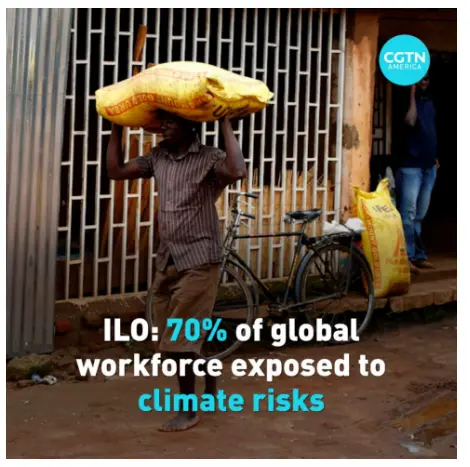
Introduction to the International Labour Organisation (ILO)
- The International Labour Organisation (ILO) was established in 1919 as part of the Treaty of Versailles, which concluded World War I, with the aim of achieving lasting peace through social justice.
- In 1946, it became a specialized agency of the United Nations.
- Headquartered in Geneva, Switzerland, the ILO is committed to promoting social justice and internationally re
Objectives of the ILO
- Promotion and realization of standards and fundamental principles and rights at work.
- Creation of greater opportunities for women and men to obtain decent employment and income.
- Enhancement of the coverage and effectiveness of social protection for all.
- Strengthening of tripartism and social dialogue.
Membership of the ILO
- With 187 state members, the ILO includes India as a founding member, with India maintaining a permanent seat on the ILO Governing Body since 1922.
- Membership is open to any UN member nation willing to accept the obligations outlined in the ILO constitution.
Report on Ensuring Safety and Health at Work in a Changing Climate
- The ILO released a report to address the growing health risks faced by workers globally due to climate change.
- The report conducted a scoping exercise to identify recent trends and priorities concerning climate change and worker safety and health.
- It highlights various key issues, including excessive heat, ultraviolet (UV) radiation, extreme weather events, workplace air pollution, vector-borne diseases, and agrochemicals.
Key Highlights of the Report
- Billions of workers are exposed to hazards exacerbated by climate change.
- Workers in various sectors face these hazards, with particular risk observed among agricultural and outdoor workers engaged in heavy labour in hot climates.
- Strong evidence links numerous health conditions in workers to climate change, such as cancer, cardiovascular disease, respiratory illnesses, kidney dysfunction, and mental health conditions.
- Each year, millions of occupational injuries, deaths, and disability-adjusted life years (DALYs) are attributed to excessive heat, pesticide poisoning, workplace air pollution, solar UV radiation, and parasitic and vector-borne diseases.
Source: ILO
Electoral Reforms in India
In News: With India's General Elections 2024 underway, attention is drawn to past electoral reforms, ranging from the establishment of the Election Commission to the adoption of Electronic Voting Machines (EVMs), and more recently, alterations in the process of appointing election commissioners.
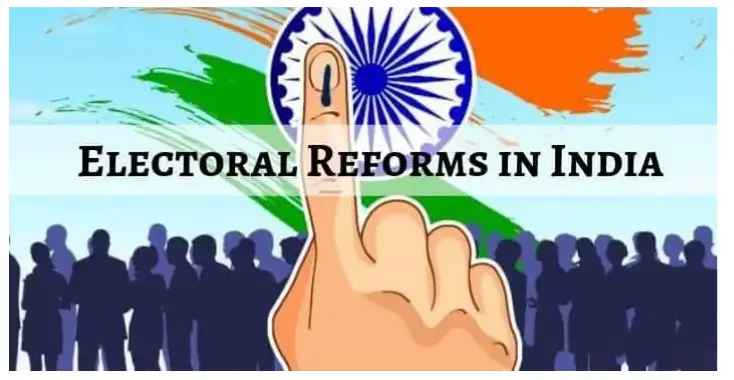
Key Electoral Reforms Enacted in India
- Foundation of Election Commission and First General Election:
- The Election Commission of India was established on January 25, 1950, under the leadership of Sukumar Sen, initially with only a Chief Election Commissioner.
- The first General Election took place from October 1951 to February 1952, involving 17.5 crore voters despite logistical challenges.
- India embraced universal suffrage for citizens above 21 years, including the illiterate and refugee populations.
- Lowering of Voting Age:
- The 61st Constitutional Amendment Act of 1984 reduced the voting age from 21 years to 18 years for Lok Sabha and assembly elections.
- This change aimed to engage unrepresented youth in the political process.
- Deputation to Election Commission:
- In 1985, a provision was made for officers and staff engaged in electoral roll preparation, revision, and correction to be on deputation to the Election Commission.
- ECI as Multi-Member Commission:
- The Election Commission of India became a Multi-Member Commission for the first time in 1989.
- The additional election commissioner positions were abolished on January 1, 1990, but reinstated on October 1, 1993.
- Transition to Ballot Papers from Coloured Ballot Box:
- Initially, individual coloured ballot boxes were used for each candidate in Indian elections.
- The introduction of ballot papers streamlined the voting process, though manual counting still posed challenges.
- Electronic Voting Machines:
- Provision was made for Electronic Voting Machines (EVMs) in 1989.
- EVMs were first used in selected constituencies during the 1998 elections and later in the general elections for the entire state of Goa in 1999.
- Provision Against Booth Capturing:
- In 1989, provisions were made to counter booth capturing during elections, including measures for poll adjournment or countermanding.
- Model Code of Conduct (MCC):
- The Model Code of Conduct was enforced with greater efficacy during T.N. Seshan's tenure as CEC, focusing on fair election practices.
- Allocation of Time on Electronic Media:
- Under a 2003 provision, equitable time allocation on electronic media during elections was mandated by the Election Commission.
- Restrictions Imposed on Exit Polls:
- Conducting and publishing results of exit polls during elections were prohibited by a 2009 provision.
- Online Enrolment in the Electoral Roll:
- In 2013, provision was made for online enrolment in the electoral roll to streamline the registration process.
- None of the Above Option:
- The Supreme Court directed the inclusion of the None of the Above (NOTA) option in ballot papers and EVMs in 2013, allowing voters to abstain from voting for any candidate while maintaining secrecy.
- Voter-Verifiable Paper Audit Trail System:
- The VVPAT system was introduced to enhance transparency and verifiability in the poll process.
- Appointment of Election Commissioners:
- The recent CEC and Other ECs (Appointment, Conditions of Service and Term of Office) 2023 superseded the Election Commission Act, 1991, outlining procedures for appointing CEC and ECs.
Key Committees Related to Electoral Reforms
- Dinesh Goswami Committee on Electoral Reforms (1990)
- Vohra Committee on Crime-Politics Nexus (1993)
- Indrajit Gupta Committee on State Funding of Elections (1998)
- Second Administrative Reforms Commission Report on Ethics in Governance (2007)
- Tankha Committee (Core Committee) on Election Laws and Reforms (2010)
|
UPSC Previous Year Questions Prelims (2017) Q. Consider the following statements:
Which of the statements given above is/are correct? (a) 1 and 2 only Ans: (d) Mains (2017) Q.1 To enhance the quality of democracy in India the Election Commission of India has proposed electoral reforms in 2016. What are the suggested reforms and how far are they significant to make democracy successful? |
Source: TH
Global Forest Watch
In News: India has lost 2.33 million hectares of tree cover since the year 2000, according to the latest data from the Global Forest Watch (GFW) monitoring project.
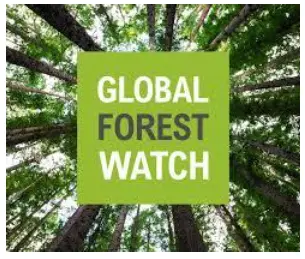
Key Findings of Global Forest Watch (GFW):
- Total Loss: Between 2002 and 2023, India experienced a substantial loss of 414,000 hectares of humid primary forest, equivalent to approximately 4.1% of the total tree cover.
- Carbon Impact: Over the same period, Indian forests emitted 51 million tons of carbon dioxide equivalent annually, while also removing 141 million tons of carbon dioxide equivalent each year, resulting in a net carbon sink of approximately 89.9 million tons annually.
- Natural Forests: Around 95% of the tree cover loss in India from 2013 to 2023 occurred within natural forests.
- Peak Years: The highest tree cover loss occurred in 2017, followed by 2016 and 2023, with significant losses in the last six years.
- State-Level Impact: Five states accounted for 60% of all tree cover loss between 2001 and 2023, with Assam experiencing the highest loss at 324,000 hectares.
- Impact of Forest Fire: Fires contributed to 1.6% of tree cover loss in India between 2001 and 2022, with Odisha recording the highest rate of loss due to fires.
- Tree Cover Loss and Climate Change: The loss of forests accelerates climate change by releasing stored carbon into the atmosphere.
Major Forest Conservation Initiatives in India:
- Forest Cover in India: The Forest Survey of India conducts biennial assessments of forest cover, with the latest assessment indicating positive strides in forest conservation efforts.
- Government Initiatives: Initiatives like the National Action Plan on Climate Change (NAPCC), National Mission for Green India, Nagar Van Yojana (NVY), and Compensatory Afforestation Fund (CAMPA) aim to protect, restore, and enhance forest cover.
- Multi-Departmental Efforts: Various programs and schemes at the central and state levels, along with the participation of NGOs, civil society, and corporate bodies, contribute to afforestation activities.
- Draft National Forest Policy: The draft policy focuses on the conservation, protection, and management of forests while safeguarding the interests of tribal and forest-dependent communities.
|
UPSC Previous Year Questions Prelims (2021) Q. At the national level, which ministry is the nodal agency to ensure effective implementation of the Scheduled Tribes and Other Traditional Forest Dwellers (Recognition of Forest Rights) Act, 2006? (a) Ministry of Environment, Forest and Climate Change Ans: (d) Prelims (2012) Q2. A particular State in India has the following characteristics:
Which one among the following States has all the above characteristics? (a) Arunachal Pradesh Ans: (a) Mains (2022) Q. “The most significant achievement of modern law in India is the constitutionalisation of environmental problems by the Supreme Court.” Discuss this statement with the help of relevant case laws. |
Source: IE
Survey of India
In News: The Tamil Nadu State government has expressed concerns regarding the Survey of India (SoI) report submitted concerning Kerala's plans for constructing a large car park project within the Mullaperiyar catchment area.
Overview of the Survey of India (SoI)
- The Survey of India (SoI) serves as the National Survey and Mapping Organization of India, operating under the purview of the Department of Science and Technology.
- Established in 1767 during India's colonial period under British rule, SoI holds the distinction of being the oldest scientific department of the Indian government, with a rich heritage and evolving traditions.
- Its primary mandate revolves around ensuring comprehensive exploration and mapping of India's territory to provide base maps essential for integrated and expedited development.
- Initially organized into five directorates in 1950 to cater to the mapping needs of the defense forces, SoI has expanded to 18 directorates across the country, covering all regions and fulfilling the basic map coverage requirements for national development.
- SoI's technological prowess, aligned with global standards, is tailored to meet the diverse needs of defense forces, planners, and scientists in various fields such as geo-sciences, land and resource management.
- The department's expert counsel is sought by various ministries and government undertakings, particularly in sensitive areas like international border settlement, state boundaries, and the planned development of underdeveloped regions.
- SoI actively contributes to national scientific programs related to geo-physics, remote sensing, and digital data transfers, lending its expertise to advance these domains.
- Acting as a trusted advisor to the Government of India, SoI provides guidance on all survey-related matters, including geodesy, photogrammetry, mapping, and map reproduction.
Main Duties and Responsibilities of SoI
- Conducting all geodetic control, geophysical surveys, and topographical control, surveys, and mapping within India.
- Production of geographical maps, aeronautical charts, and surveys for developmental projects.
- Surveying forests, cantonments, city surveys, cadastral surveys, and mapping special areas.
- Ensuring accurate spellings of geographical names and demarcating external and inter-state boundaries of India.
- Engaging in research and development in various aspects of cartography, printing, geodesy, photogrammetry, and topographical surveys.
- Predicting tides at 44 ports, including foreign ports, and certifying external boundaries and coastlines on maps published by other agencies.
Source: TH
Biomarkers
In News: The screening for blood biomarkers has been suggested as a promising approach to detect cancer in its early stages.
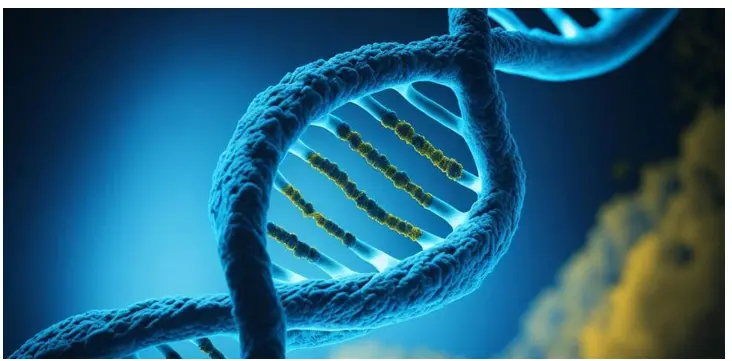
Overview of Biomarkers
- Biomarkers, also known as Biological Markers, are identifiable physical, chemical, or biological characteristics present in the human body that are measurable.
- The World Health Organization (WHO) defines biomarkers as measurements reflecting interactions between biological systems and potential hazards, which can be chemical, physical, or biological in nature.
- Additionally referred to as molecular markers and signature molecules, biomarkers play a crucial role in disease diagnosis, medication prescription, dosage determination, and drug development.
- Biomarkers encompass various biomolecules such as carbohydrates, proteins, lipids, genes, DNA, RNA, platelets, enzymes, and hormones.
- Classification of Biomarkers:
- Based on their source or location, biomarkers can be categorized into:
- Molecular biomarkers, measurable in biological samples like blood plasma, serum, cerebrospinal fluid, and biopsy specimens.
- Radiographic biomarkers, obtained from imaging studies such as bone mineral density assessments.
- Histologic biomarkers, reflecting biochemical or molecular alterations in cells, tissues, or fluids, used in cancer staging and grading.
- Physiologic biomarkers, representing measures of body processes like blood pressure, pulse rate, and heart rate.
- Based on their roles/functions, biomarkers can be classified into:
- Susceptibility/Risk Biomarkers, indicating the likelihood of developing a disease or condition.
- Diagnostic Biomarkers, used for disease detection or confirmation.
- Prognostic Biomarkers, predicting disease progression or relapse in confirmed cases.
- Monitoring Biomarkers, assessing disease stage, drug exposure, or environmental agent exposure.
- Predictive Biomarkers, identifying individuals with a higher likelihood of strong outcomes when exposed to specific drugs, aiding treatment decisions.
Source: LS
National Service Scheme
In News: On the day of polls, trained National Service Scheme (NSS) volunteers from 153 NSS units will provide their services to differently abled individuals and senior citizens in Kozhikode district.
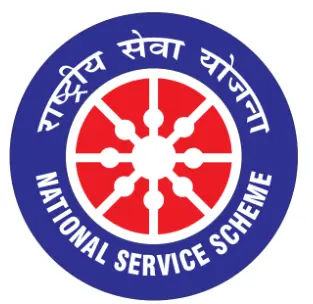
Overview of the National Service Scheme (NSS)
- The National Service Scheme (NSS) was inaugurated in 1969, coinciding with the birth centenary celebrations of Mahatma Gandhi.
- It operates as a Central Sector Scheme under the auspices of the Government of India.
- NSS offers students from the 11th and 12th grades of schools, as well as those enrolled in technical institutions, graduate, and postgraduate programs at colleges and universities across India, the opportunity to participate in a range of government-led community service activities and programs.
- NSS emblem:
- The emblem is inspired by the "Rath" wheel of the Konark Sun Temple in Odisha.
- The navy blue color represents the cosmos, with NSS symbolizing a small part ready to contribute to humanity's welfare.
- The red color symbolizes the liveliness, activity, energy, and high spirits of NSS volunteers.
- The giant wheels of the Sun Temple depict the cycle of creation, preservation, and release, symbolizing the movement of life across time and space.
- Activities undertaken by NSS include National Integration Camps, Shramdaan (voluntary labor), blood donation drives, immunization campaigns, tree plantation initiatives, disaster management efforts, and adventure programs.
- Motto:
- The motto of the National Service Scheme is "NOT ME BUT YOU," emphasizing the spirit of selflessness and service to others.
- Nodal Ministry:
- The Ministry of Youth Affairs & Sports serves as the nodal ministry overseeing the NSS program.
Source: TH
Rights of Persons with Disabilities Act, 2016
In News: The Supreme Court recently expressed disappointment over the lackluster implementation of the Rights of Persons with Disabilities Act, 2016 (RPWD Act) throughout India.
Overview of the Rights of Persons with Disabilities Act, 2016 (RPwD Act)
- Enacted in 2016 and enforced from April 19, 2017, the Rights of Persons with Disabilities Act, 2016 (RPwD Act) replaced the Persons with Disabilities (Equal Opportunities, Protection of Rights, and Full Participation) Act, 1995.
- The primary objective of the RPwD Act is to ensure that all persons with disabilities can lead dignified lives free from discrimination and with equal opportunities, enshrining specific provisions to safeguard their rights.
- Aligned with the United Nations Convention on the Rights of Persons with Disabilities (UNCRPD), which India is a signatory to, the RPwD Act defines disability as an evolving and dynamic concept, expanding the types of disabilities from 7 to 21, with provision for the Central Government to include more.
- "Benchmark disabilities" are defined as those certified with at least 40 percent of the specified disabilities, entitling them to additional benefits and support.
- Rights and entitlements under the RPwD Act include free education for children with benchmark disabilities aged 6 to 18, 5% reservation in seats in government and government-aided higher educational institutions, and 4% reservation in government jobs for certain categories of persons with benchmark disabilities.
- Emphasis is placed on ensuring accessibility in public buildings within prescribed timeframes and the establishment of broad-based Central and State Advisory Boards on Disability as policy-making bodies.
- The Act provides for the creation of National and State Funds to provide financial support to persons with disabilities and grants guardianship through the District Court or designated authorities, promoting joint decision-making between guardians and persons with disabilities.
- Strengthening the Office of Chief Commissioner of Persons with Disabilities and State Commissioners of Disabilities, the Act establishes regulatory bodies and grievance redressal agencies, assisted by expert Advisory Committees.
- Penalties for offences against persons with disabilities and violations of the Act include imprisonment, fines, and designation of Special Courts in each district to handle such cases, ensuring accountability and protection of rights.
Source: BB
Safeguard Measures under World Trade Organization (WTO)
In News: India and several other countries, such as Switzerland, Brazil, China, Japan, Korea, and Russia, have voiced criticism against the European Union's decision not to terminate its safeguard measure on imports of specific steel products following a review.
Overview of Safeguard Measures
- Safeguard measures refer to actions taken by a country that qualify as "emergency" actions under the WTO Agreement on Safeguards.
- Under the WTO Agreement on Safeguards, a member country may implement safeguard actions, such as temporarily restricting imports of a product, to protect a specific domestic industry from increased imports that are causing or threatening serious injury.
- The primary objective of safeguard measures is to prevent or alleviate serious injury to the domestic industry of the member state.
- These measures typically involve the suspension of concessions or obligations and may include quantitative import restrictions or duty increases beyond bound rates.
- Safeguard measures are one of three types of contingent trade protection measures available to WTO members, alongside anti-dumping and countervailing measures.
- The guiding principles of the agreement regarding safeguard measures stipulate that they must be temporary, imposed when imports cause or threaten serious injury, applied on a non-selective basis, progressively liberalized while in effect, and compensation must be provided to affected members.
- Unlike anti-dumping and countervailing measures, safeguard measures do not require a finding of an "unfair" practice.
- The agreement defines "serious injury" as a significant overall impairment in the position of a domestic industry, with investigating authorities evaluating all relevant factors to determine its presence.
Source: BL
Tundra Ecosystem
In News: A study has cautioned that the warming planet could potentially modify the features of tundra environments, leading to a shift from being carbon sinks to becoming carbon sources.
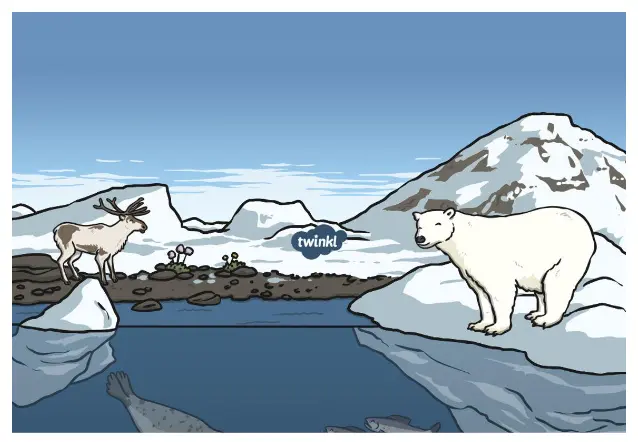
Overview of Tundra Ecosystem
- Tundra ecosystems are treeless regions located in the Arctic and on mountain peaks, characterized by cold and windy climates with limited rainfall.
- Key Characteristics:
- Low temperatures: The average temperature ranges from -34 to -6 degrees Celsius (-30 to 20 degrees Fahrenheit) in tundra regions.
- Short growing seasons: Tundra experiences a brief summer growing season of only 50 to 60 days, with up to 24 hours of sunlight per day.
- Permafrost: Beneath the surface, there is a layer of permanently frozen soil, ranging from a few inches to several feet in thickness.
- Minimal precipitation: Despite similarities to deserts in terms of moisture, the tundra receives low levels of precipitation, mainly in the form of snow.
- Limited biodiversity: Harsh conditions result in fewer plant and animal species compared to other biomes.
- Carbon sink: Tundra serves as a significant carbon storage area due to slow decomposition rates in the cold environment.
- Types of Tundra:
- Arctic Tundra: Found north of the taiga belt in the far Northern Hemisphere, encompassing areas between the North Pole and the boreal forest in regions such as Canada, Russia, Greenland, Iceland, Norway, Sweden, and Finland.
- Alpine Tundra: Prevails above the tree line in mountain ranges worldwide, including the Rockies, the Andes, the Himalayas, and the Alps.
- Antarctic Tundra: Includes sub-Antarctic islands and parts of the continent of Antarctica.
- Flora:
- Vegetation includes mosses, lichens, sedges, cotton grass, birches, and other hardy plant species adapted to the harsh environment.
- Fauna:
- Animal species found in tundra regions include Arctic foxes, snow geese, polar bears, and other animals adapted to cold climates.
Source: DTE
Restoring earth’s right to ‘good health’
In News: On International Mother Earth Day 2024, UN Secretary-General Antonio Guterres stressed the critical importance of restoring balance with nature. He likened humanity's actions to those of a delinquent child, causing disorder and harm to both nature and humanity.
State of the Global Climate Report:
- The latest State of the Global Climate Report by the World Meteorological Organization unveils record-breaking levels for most climate change indicators in 2023.
- It confirms 2023 as the hottest year on record and highlights records broken for ocean heat, sea level rise, Antarctic Sea ice loss, and glacier retreat.
Recognition of the Link Between Climate Change and Human Rights:
- European Court of Human Rights decision:
- The European Court of Human Rights found the Government of Switzerland guilty of violating the rights of a group of senior women citizens from a Swiss civil society group called KlimaSeniorinnen.
- The court noted inadequate government actions to curb emissions, failing to protect women against climate change impacts, marking a global precedent.
- Supreme Court of India ruling:
- A recent ruling by the Supreme Court of India acknowledged people's right 'to be free from the adverse impacts of climate change', citing Constitutional articles 14 and 21 as sources.
- This underscores the increasing recognition of the climate crisis as a human rights crisis.
India's Climate Action:
- India's observance of International Mother Earth Day on April 22 reflects its cultural reverence for nature.
- The Madras High Court's declaration of 'Mother Nature' as a 'living being' underscores India's commitment to preserve and conserve nature.
- India has achieved significant progress in decoupling emissions from economic growth, meeting two of its Nationally Determined Contribution (NDC) targets.
- However, the country remains highly vulnerable to climate change impacts, necessitating urgent action.
Significance of Leveraging a Rights-Based Approach to Accelerate Climate Action:
- Setting accountability:
- Recognizing climate change impacts within constitutional fundamental rights establishes legal accountability for climate action, focusing on human rights perspectives.
- Accelerating climate action:
- This observation has the potential to hasten climate action, encouraging integrated approaches among government, private sector, and civil society.
- Framework law on climate change:
- It could lead to the adoption of regulations on climate change, enhancing state capacities and strengthening climate governance.
- Knowledge sharing:
- Promoting knowledge exchange among states and union territories fosters coherence in policies and actions.
- Rights-based dialogue:
- Empowering citizen groups and civil society organizations fosters dialogue on environment, biodiversity, and climate action, addressing potential tensions and fostering consensus.
Source: BS
Share the article
Edukemy’s Current Affairs Quiz is published with multiple choice questions for UPSC exams
MCQ
Get Latest Updates on Offers, Event dates, and free Mentorship sessions.

Get in touch with our Expert Academic Counsellors 👋
FAQs
UPSC Daily Current Affairs focuses on learning current events on a daily basis. An aspirant needs to study regular and updated information about current events, news, and relevant topics that are important for UPSC aspirants. It covers national and international affairs, government policies, socio-economic issues, science and technology advancements, and more.
UPSC Daily Current Affairs provides aspirants with a concise and comprehensive overview of the latest happenings and developments across various fields. It helps aspirants stay updated with current affairs and provides them with valuable insights and analysis, which are essential for answering questions in the UPSC examinations. It enhances their knowledge, analytical skills, and ability to connect current affairs with the UPSC syllabus.
UPSC Daily Current Affairs covers a wide range of topics, including politics, economics, science and technology, environment, social issues, governance, international relations, and more. It offers news summaries, in-depth analyses, editorials, opinion pieces, and relevant study materials. It also provides practice questions and quizzes to help aspirants test their understanding of current affairs.
Edukemy's UPSC Daily Current Affairs can be accessed through:
- UPSC Daily Current Affairs can be accessed through Current Affairs tab at the top of the Main Page of Edukemy.
- Edukemy Mobile app: The Daily Current Affairs can also be access through Edukemy Mobile App.
- Social media: Follow Edukemy’s official social media accounts or pages that provide UPSC Daily Current Affairs updates, including Facebook, Twitter, or Telegram channels.

